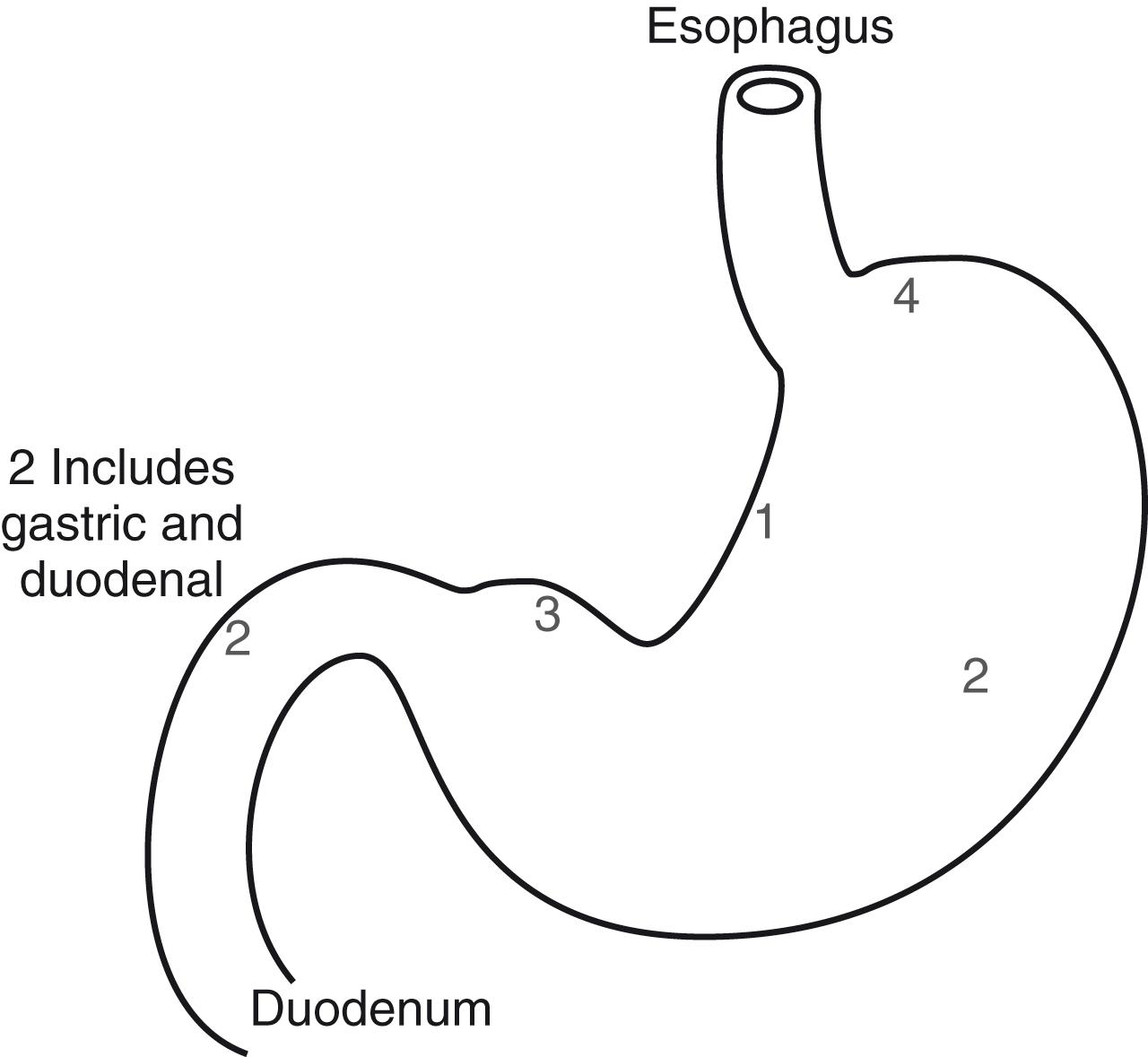Physical Address
304 North Cardinal St.
Dorchester Center, MA 02124
PUD includes gastric and duodenal mucosal defects (ulcerations) extending to the muscularis mucosa.
The lifetime risk for PUD is about 8%–14%. It usually occurs between ages 20 and 60 years, with peak incidence in the fourth decade of life. It was more common in males but is shifting toward gender equivalence. Hemorrhage is the most common cause of hospital admission, and overall hospitalization rates are decreasing with improved medical management.
Gastric or duodenal epithelial cells secrete mucus and bicarbonate in response to irritation of the lining or cholinergic stimulation and prostaglandin stimulation respectively. The mucous acts as an impermeable barrier to acid, while the bicarbonate serves as a proximity buffer. Disruptive factors such as Helicobacter pylori infection and nonsteroidal antiinflammatory drugs (NSAIDs) can disrupt this equilibrium, leading to epithelial injury and ulceration. Other risk factors include cigarette smoking, blood group O, chronic pancreatitis, cirrhosis, emphysema, and α-1 antitrypsin deficiency.
The foregut includes the anterior part of the alimentary canal, from the mouth to the duodenum at the ligament of Treitz. Peptic ulcers can occur throughout the length, although the majority are found in the stomach and/or duodenum and classified as follows ( Fig. 47.1 ):
Type I: Ulcers along the lesser curve and incisura (most common)
Type II: Any gastric ulcer plus a duodenal ulcer
Type III: Prepyloric ulcers
Type IV: Ulcers at the gastroesophageal junction or proximal cardia
Type V: Any ulcer associated with NSAID or aspirin use

Normal gastric acid production is 2–3 L/day. Acid production is stimulated by (1) parasympathetic action (acetylcholine from vagus nerves), (2) gastrin stimulation from G-cells in the gastric antrum, and/or (3) histamine stimulation from enterochromaffin-like cells throughout the stomach. These three factors act on parietal cells to induce insertion of K/H+ ATPase pumps on the apical surface, which then secrete hydrogen ions into the gastric lumen. Keep in mind that acid hypersecretion is only one contributory factor for PUD (40%), and type I and IV ulcers have low or normal acid levels.
PUD usually presents with epigastric pain that is temporally mediated by food or antacid ingestion. Nausea and vomiting may occur. Gastric ulcers typically present with pain during meals. In contrast, duodenal ulcers may initially be relieved by eating (due to closure of the pylorus during initial stimulation), but the pain returns approximately 2 hours later. Ulcers may also present with bleeding (see Chapter 53 ) or gastric outlet obstruction from pyloric spasm or scarring. Full thickness injury (perforation) is rare, but is classically diagnosed with peritonitis and free air on x-ray if the ulcer is located on the anterior gastric wall. Alternatively, posterior ulcers can erode in the pancreas and/or gastroduodenal artery resulting in pancreatitis or hemorrhage.
Flexible esophagogastroduodenoscopy (EGD) is preferred although an upper GI contrast study with barium can also be done. EGD is preferred as intervention, and additional testing (biopsy for malignancy, H. Pylori infection, etc.) can be done at the same time. In unstable patients, after initiating resuscitation, a rapid upright chest x-ray can demonstrate free air if perforation is considered. Computed tomography scan is a more sensitive test for small perforations or in patients with unclear history to clarify a broader differential that may include pancreatitis, hepatitis, intestinal ischemia or infection, aortic aneurysm, and so on. In all patients with epigastric or chest pain, it is essential to obtain an electrocardiogram to rule out an acute coronary syndrome.
Become a Clinical Tree membership for Full access and enjoy Unlimited articles
If you are a member. Log in here